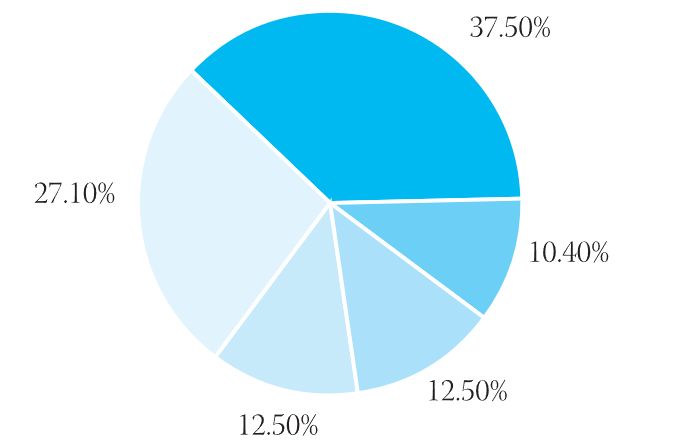Treatment aspects of primary nephrotic syndrome in adults
DOI:
https://doi.org/10.17305/bjbms.2006.3166Keywords:
nephrotic syndrome, glomerulonephritis, treatment, outcomeAbstract
Strict therapy protocol, which would be used universally for certain morphological forms of primary nephrotic syndrome, does not exist. The aim of the study was to show the effects of used therapy protocol in treatment of primary nephrotic syndrome at the Institute of Nephrology, Clinical Center University of Sarajevo in period of 2000-2005. The retrospective analysis covered 48 patients (17 women and 31 men) with idiopathic nephrotic syndrome, where pathomorphological changes were proved by kidney biopsy. Minimal change disease was confirmed with 6 (12.5%) patients. All patients were initially treated with corticosteroids with dose of 1 mg/kg of body weight. Five patients were in the group of primary responders (83.3%) with long term total remission, and 1 patient (16.6%) was a primary responder with 3 relapses in 8 months with a therapy of corticosteroids and bolus of cyclophosphamide. Diffuse mesangial proliferative glomerulonephritis was shown in 13 patients (27.1%). Seven patients from this group were treated with corticosteroid therapy (1 mg/kg of body weight for 4 weeks, followed by 0.5 mg/ kg of body weight until therapeutical response was achieved, and finally gradual exclusion of therapy after eight weeks in responsive patients). Six patients were treated with corticosteroids and one-month of bolus cyclophosphamide during half of year (10-5 mg/kg of body weight). Total remission was achieved in 37,9% of the patients. The IgA nephropathy presented with the nephrotic syndrome was shown in 10.4% (5) of the patients. Three patients from this group were treated with corticosteroid therapy (1 mg/kg of body weight for 4 weeks, followed by 0,5 mg/ kg of body weight until therapeutical response was achieved, and finally gradual exclusion of therapy after eight weeks in responsive patients) and.2 patients with corticosteroids and cyclophosphamide (1.5 mg/kg of body weight) during 6 months. Complete remission of nephrotic syndrome from this pathomorphological category was achieved in 2 patients. Membranoproliferative glomerulonephritis was shown in 6 patients (12.5%). All were treated with corticosteroids plus bolus of cyclophosphamide. Partial remission was achieved in one patient. Membranous glomerulonephritis was confirmed in 18 patients (37.5 %). Combined therapy of corticosteroids and bolus of cyclophosphamide was used in 7/18 patients, in 2/18 patients therapy of corticosteroids and per os cyclophosphamide (2 mg/kg of body weight) and in 9/18 patients cyclosporine therapy (3 mg/kg of body weight). Complete remission was achieved in 38.8% of the patients. A high percentage of achieved remissions of primary nephrotic syndrome in adults shows the efficiency of immunomodulating therapy used. Membranoproliferative glomerulonephritis still remains a therapy problem.
Citations
Downloads

Downloads
Published
Issue
Section
Categories
License
Copyright (c) 2018 Bosnian Journal of Basic Medical Sciences

This work is licensed under a Creative Commons Attribution 4.0 International License.
How to Cite
Accepted 2018-02-10
Published 2006-05-20









